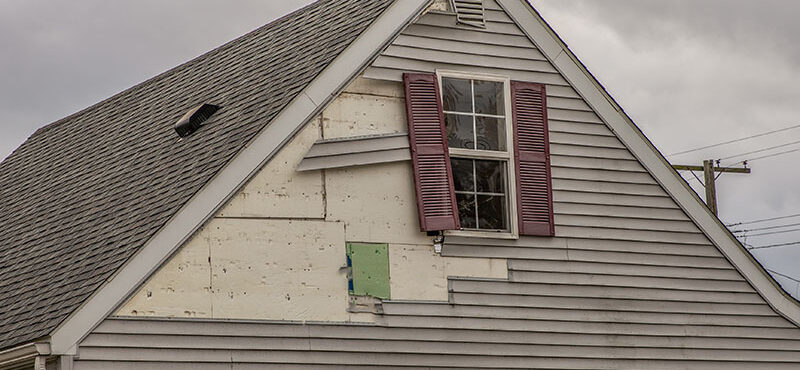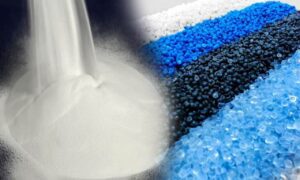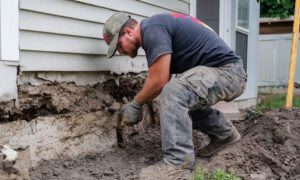Siding plays a crucial role in protecting a home from the elements, enhancing curb appeal, and improving energy efficiency. Over time, however, exposure to harsh weather conditions, moisture, and general wear can cause siding to deteriorate. Ignoring early signs of damage can lead to structural problems, increased energy bills, and costly repairs down the line.
Knowing when to repair or replace siding can save homeowners from unexpected expenses and keep their homes in excellent condition. This guide covers the key warning signs that indicate it’s time for siding maintenance and what steps to take next.
1. Visible Cracks, Gaps, or Holes
Damaged siding compromises the protective barrier of a home, allowing moisture, pests, and drafts to enter. Cracks and holes may appear small at first but can quickly expand, leading to more significant structural issues.
🔍 What to Check:
- Small cracks or gaps between siding panels
- Holes caused by insects, rodents, or severe weather
- Warped or uneven siding sections
🚨 What It Means:
- Minor cracks can often be repaired with caulking or replacement of individual panels.
- Widespread damage may indicate the need for a full siding replacement.
If siding damage is left untreated, water infiltration can cause mold growth and wood rot, leading to more extensive repairs.
2. Fading or Discoloration
Siding should maintain its color for years, but exposure to UV rays, rain, and wind can cause noticeable fading.
🔍 What to Check:
- Uneven or patchy discoloration across siding panels
- Fading that makes the home look older or worn out
- Paint that peels or no longer adheres to the surface
🚨 What It Means:
- If siding has lost its color, it may be nearing the end of its lifespan.
- Fading alone doesn’t necessarily require replacement, but it may indicate reduced weather resistance.
New siding not only enhances the home’s appearance but also improves its ability to withstand the elements.
3. High Energy Bills and Drafty Walls
Damaged siding affects a home’s insulation, making it harder to maintain indoor temperatures. If heating and cooling costs have increased unexpectedly, siding could be a contributing factor.
🔍 What to Check:
- Drafts near walls or windows, even when they are closed
- Uneven heating or cooling in different rooms
- Rising energy bills despite no major changes in usage
🚨 What It Means:
- Gaps in siding allow air to escape, forcing HVAC systems to work harder.
- Poor insulation beneath siding reduces energy efficiency.
Upgrading siding can improve insulation and reduce energy costs by keeping indoor temperatures stable year-round.
4. Bubbling or Blistering on the Surface
Bubbles or blisters on siding indicate trapped moisture, which is a red flag for potential water damage.
🔍 What to Check:
- Small raised spots or blisters forming on the surface
- Areas that feel soft or spongy when touched
- Discoloration or peeling paint near affected spots
🚨 What It Means:
- Moisture is trapped beneath the siding, potentially causing mold and rot.
- The siding’s protective coating may have failed, allowing water infiltration.
Replacing moisture-damaged siding promptly prevents further structural damage.
5. Mold, Mildew, or Rot
Mold and mildew thrive in damp environments, and siding that retains moisture can become a breeding ground for these problems.
🔍 What to Check:
- Dark spots or streaks on siding, especially near the bottom of walls
- Green or black mold growth around seams and edges
- Soft or crumbling wood siding
🚨 What It Means:
- Mold and mildew can spread quickly, affecting indoor air quality.
- Rotted siding weakens the home’s exterior, increasing the risk of further damage.
If rot has affected large sections of siding, replacement may be the best solution.
6. Peeling or Loose Caulking Around Joints
Caulking helps seal gaps between siding panels and around windows and doors. When it begins to fail, water can seep into the home’s structure.
🔍 What to Check:
- Gaps where caulking has worn away
- Peeling or cracked sealant around windows, doors, and siding joints
- Evidence of moisture penetration near caulked areas
🚨 What It Means:
- Small caulking repairs can prevent further water damage.
- If siding panels are shifting or separating, a full replacement may be needed.
Regularly inspecting and reapplying caulking can extend the lifespan of siding.
7. Warping or Buckling Panels
Siding that appears wavy or bulging is often a sign of underlying structural problems.
🔍 What to Check:
- Panels that do not lay flat against the home
- Buckling or bubbling when pressing on the siding
- Warped areas, particularly in spots exposed to direct sunlight
🚨 What It Means:
- Heat exposure or moisture retention may be causing material distortion.
- Poor installation or aging materials can lead to warping.
If multiple panels are affected, siding replacement is likely the best option.
8. Pests or Insect Infestations
Certain types of siding, especially wood, are susceptible to pest infestations. Termites, carpenter ants, and rodents can create hidden damage.
🔍 What to Check:
- Small holes or burrowing marks in wood siding
- Sounds of insects inside the walls
- Unusual dust or droppings near the siding base
🚨 What It Means:
- Pest damage weakens siding, making the home vulnerable to weather damage.
- In severe cases, replacing siding may be necessary to eliminate infestations.
Choosing pest-resistant siding materials, such as vinyl or fiber cement, can prevent future infestations.
9. Water Stains or Interior Damage
Sometimes, siding damage is first noticed inside the home. Water stains, peeling wallpaper, or damp spots on walls can indicate exterior siding issues.
🔍 What to Check:
- Discoloration on walls or ceilings
- Soft or warped drywall near exterior walls
- Musty odors suggesting hidden moisture
🚨 What It Means:
- Water is seeping behind the siding, leading to structural damage.
- Immediate action is needed to prevent mold growth and interior repairs.
Replacing compromised siding ensures a watertight seal and protects the home from further damage.
Final Thoughts
Siding serves as the first line of defense against the elements, and keeping it in good condition is essential for maintaining a home’s structural integrity and energy efficiency. From visible cracks to hidden moisture damage, recognizing the early signs of siding wear can prevent expensive repairs in the future.
For homeowners unsure about whether their siding needs repair or replacement, consulting with professionals is the best way to assess damage and explore solutions. All-Side Roofing & Restoration provides expert siding, roofing, and gutter services to ensure homes remain well-protected and visually appealing.
Taking action at the first sign of siding damage can save homeowners money and extend the lifespan of their home’s exterior—making it a smart investment for the future.k8



































